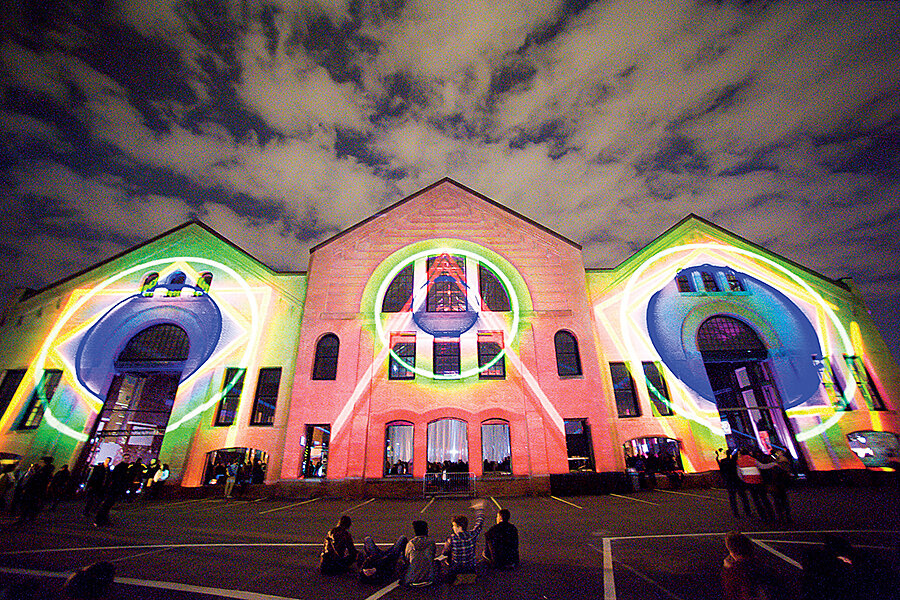Illuminated urban canvas
Loading...
As twilight gives way to dark on a warm fall night in Boston’s South End, a 12-foot-tall human face emerges from the side of an old brick power plant. A bright light shines on its blank, faceted features, made of triangular white boards bolted together. Suddenly the superimposed face of a laughing woman fills its empty angles with life.
The piece is a 3-D multimedia artwork called “Your Big Face,” and the laughing woman, who is facing it from the other side of a camera and projector, is just one of the crowd visiting Illuminus, a public festival of new media art.
“Interactive public art is a beautiful way of engaging an otherwise passive audience,” says Dan Sternof Beyer, who created “Your Big Face” with his company, New American Public Art.
Illuminus is one of a series of Nuit Blanche or “white night” evening events that have sprung up since the turn of the millennium, beginning in Paris, to connect projection artists with the public.
“It’s intended to transform people’s perception of public space,” says Jeff Grantz, an artist who has been the driving force behind Boston’s event.
Since 2002, Nuit Blanche festivals have spread across 120 cities worldwide, including Barcelona, Spain; Buenos Aires; Montreal; St. Petersburg, Russia; Havana; Melbourne, Australia; New York; and now Boston. The outdoor, urban backdrops allow artists, designers, and technicians to collaborate on large-scale works.
Projected onto another tall Boston building, programmer and artist Cindy Sherman Bishop’s piece, “The Way You Move,” detects visitors’ motions and translates them into digital distortions that ripple through footage of water in a plumbing pipe. Down below, two children dance inside squares of light; above them, their movements smear a kind of digital finger paint across the bricks.
To Mr. Grantz, these events are about refreshing people’s relationships to their own neighborhoods. “Bring them to an environment they may have seen a hundred times,” he says, “and show it to them through the lens of an artist.”






